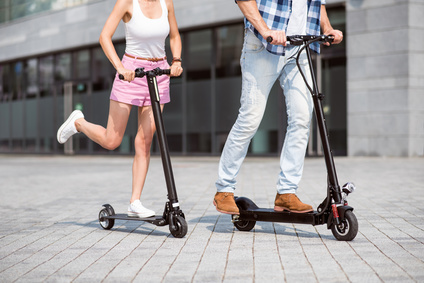Six Factors Affecting The Climbing Ability Of Your Electric Scooter
When buying an electric scooter, we usually pay our most attention to the speed, miles, load capacity, size and weight of the electric scooter.
The climbing ability of an electric scooter is more like a part that is easily overlooked by us. If you have overlooked it, then you may wish to check the maximum climbing gradient of the corresponding electric scooter in our store.
While, if you are not very clear about the factors that affect climbing ability, then please read this blog.

-
Climbing Gradient
![10 Best Electric Scooters For Climbing Hills [2021 Guide] - Future Sport](https://futuresport.co/wp-content/uploads/2020/06/maxresdefault-15.jpg)
The first and most important feature of electric scooter climbing ability is the maximum gradient it can climb. Generally, the greater the slope gradient, the more difficult it is for electric scooters to climb. Normally, electric scooters have different max climbing abilities, some are 10°, some are 20° or 30°, so when we choose electric scooters to climb hills, we really need to check whether this specification number is qualified.
If your daily travel is relatively flat, the electric scooter with a maximum climbing gradient of 15° can fully adapt to your daily travel. Of course, if you want to buy a maximum climbing angle of 20°or 30° electric scooter, which is more suitable for mountain climbing, then the price may be higher.
-
Battery Capacity
The battery provides forward energy for an electric scooter and determines how far the electric scooter can be ridden. When we ride our electric scooter on a road with a steep gradient, the greater the gradient, the more energy it needs. We should try our best to fully charge before riding, so that we can pass smoothly at a certain speed when encountering a sloped road. If you usually have requirements for climbing hills, then you may need an electric scooter with a larger battery capacity.
-
Motor Power

The motor provides the power to move the scooter forward and it determines the maximum speed at which the scooter can travel. An electric scooter with a 36V 350W motor should be fine for hills of around 15°, but the longer the distance, the more energy it will need, then the slower the scooter will move. Of course, a 500W motor may be faster for climbing hills, so the power of the motor is depending on your own needs.
-
Rider Weight

Generally speaking, the heavier the rider, the slower the electric scooter will move. It becomes more obvious when you ride an electric scooter to climb a mountain. Because when we ride on slopes or mountain roads, part of our weight will turn into a pulling force that is opposite to the forward direction, so electric scooters are more difficult to ride on hills. Therefore, we should choose electric scooters with a max load much greater than our weight for climbing.
-
Road Condition

-
Tire friction

For electric scooters running on mountain roads, the tires should have good grip. If there is not enough friction, it is difficult for the electric scooter to go uphill. If it rains or when riding downhill, electric scooters with weak tire grip can be very dangerous. Therefore, we usually recommend that you buy grooved tires. Our Kugoo electric scooter tires have this feature. In addition, when we go up the mountain, wheels with larger diameters can bear more weight than wheels with smaller diameters and drive faster.










Dejar un comentario